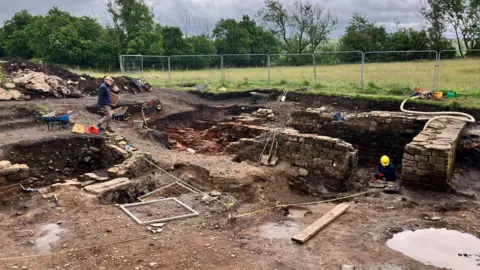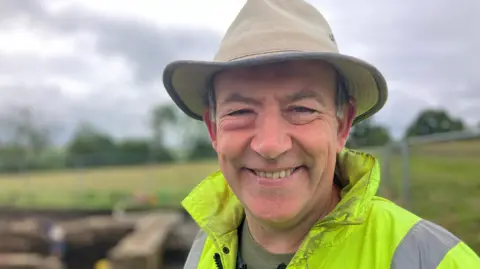Last season of excavation starts at Roman fort
 BBC
BBCArchaeologists have started excavating a Roman fort for the final time, meaning some ancient artefacts may never see the light of day.
They are investigating remains at Birdoswald, in Brampton, on the Hadrian’s Wall World Heritage Site in Cumbria.
This will be the last season of excavations at the site, looking into remains of houses, communal spaces, workplaces, a bath complex and a potential extension of the cemetery area.
"You could go on forever - you could have lifetimes here and you'd still be discovering things," said Newcastle University professor and project co-director Ian Haynes.
"But as far as the big questions that we were hoping to address, I think working as a team between the institutions, we have done pretty well."
Finds from the five seasons of digging at the site will be logged and stored at Tullie museum in Carlisle, where they may go on public display in the future.

Over the course of the five-year project, which began in 2021, Newcastle University archaeology students have also joined the dig.
Student Jessica Pugh said finding artefacts was a "really special thing".
"Each bit of pot is like a memento from someone else's life - someone's spent loads of time making that and they're not remembered in history, but you're the next person to actually hold that piece of pot again," she said.
The dig has been an opportunity for students to get hand-on experience on a dig.
Student Charlie Rousseau-Williams said: "It's been really amazing - I've been looking forward to this for most of my life, it's been my dream since I was eight."
'Varied settlement'
Guided tours are given to spread the word about the importance of the site.
"It's always the way that new questions emerge as you excavate, but we've got a very good sense now, working with our colleagues at Historic England, of just what a varied settlement this was," Prof Haynes said.
The greatest concentration of finds, ranging from household items to slingshot bullets, was unearthed to the north of the wall last year.
Archaeologists said they suggested a deliberately planned community which was thriving and trading, challenging assumptions that civilians were sheltering to the south of the fortifications.
Prof Haynes added: "There is a lot going on here and we've got a better sense of how this place worked 1,800 years ago."
Follow BBC Cumbria on X (formerly Twitter), Facebook and Instagram. Send your story ideas to [email protected].
